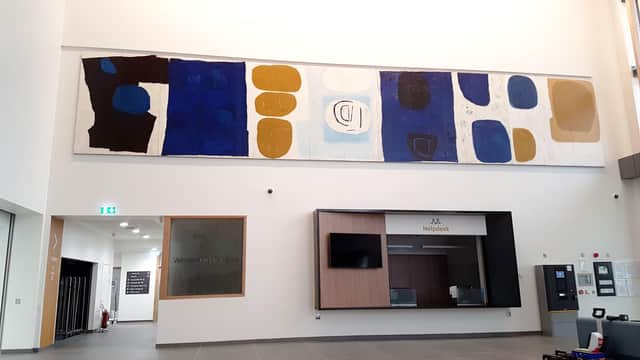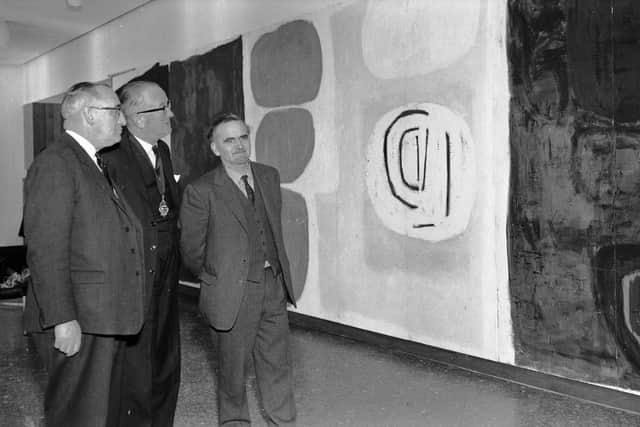Acclaimed Derry hospital mural was unveiled to ‘horrified silence’


When it was first unveiled before a large invited audience at the newly-opened Altnagelvin Hospital in 1962, the reaction to William Scott’s 46 foot long mural was one of horrified silence.
According to the artist’s wife, Mary, who had been asked to pull the cord at the opening ceremony, ‘People stared, stunned and silent. There was no sound at all. Within less than twenty minutes, the room was empty.’
Advertisement
Hide AdAdvertisement
Hide AdA less than auspicious debut for a work of art that has, since, gone on to be hailed as, arguably, Scott’s finest ever.


The ‘Scott Mural’ or ‘Altnagelvin Mural’, as it’s known, now forms the centrepiece of the soon-to-open new North Wing at the hospital which, last year, celebrated its 60th birthday.
Made across 15 panels of oil on plywood, the mural was commissioned by Eugene Rosenberg, the architect of Altnagelvin Hospital - the first post-war NHS hospital in Britain - in 1958. Scott began the first stage of its creation in 1959, with Mark Rothko - the acclaimed American abstract painter - becoming one of his first peers to see the work in its embryonic stage.
The scale of the commission was something entirely new for Scott and it is hardly surprising that it took him nearly a year even to figure out how to start.
Advertisement
Hide AdAdvertisement
Hide AdScott worked on the mural in his studio where, for lack of space, he had to spread the panels over three walls of one room and two walls in an adjoining room.
Little is known about the progress of the mural, but it evidently went through several stages, beginning with Scott working on each of the fifteen panels separately before deciding to divide them into pairs, leaving one to stand alone. At one stage, he was working with a range of bright oranges, salmon pinks, light yellows and blues (colours that were found underneath when the mural was restored in 2010). The darker, more austere colours of the final version, dark blues deepened in places by black, ochres, light cerulean blue and blue-whites, are colours that suggest the raw elements of an island landscape: earth, air and water.
The shell-like motif in the centre of the mural is closely related to the prehistoric carvings in the passage graves and stone circles found all over Ireland, while the heavy texturing of the paint in the other panels recall the ancient weathering of prehistoric monoliths.
It has been said that the grand gestural forms that fill these panels owed more to American painting than any other painting being produced in this country.
Advertisement
Hide AdAdvertisement
Hide AdScott, it’s understood, had been ‘overwhelmed’ by the scale and the directness of the work he had seen in 1953 when he visited New York.
In November 1961, Scott’s mural was shown at the Tate Gallery before being installed at Altnagelvin.
It was later removed and is understood to have spent some time in storage.
William Scott (1913-1989) was one of the leading British artists of his generation. During his lifetime, his work was exhibited widely, both at home and abroad, and continues to be to this day. His paintings can be found in public collections around the world.